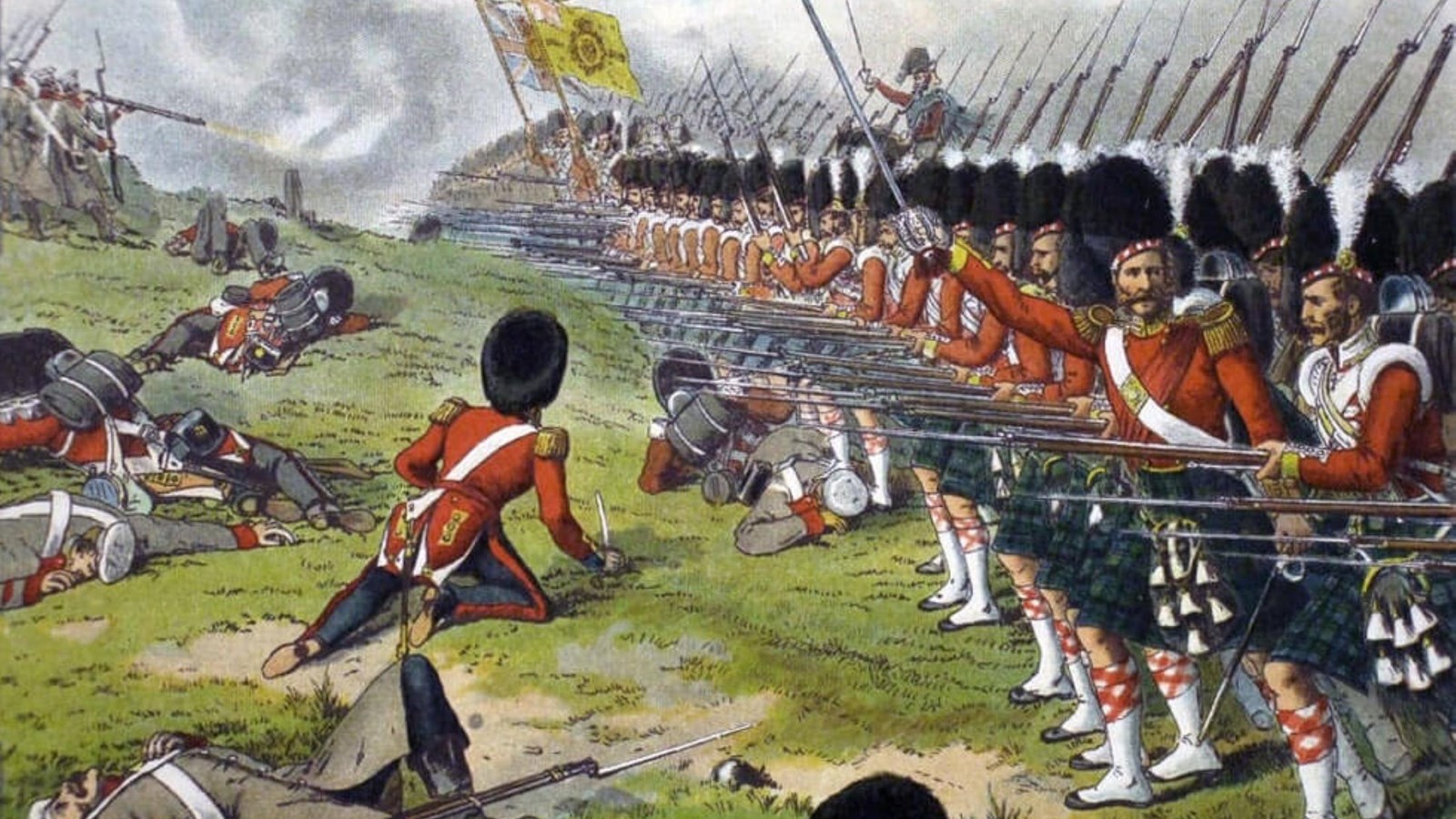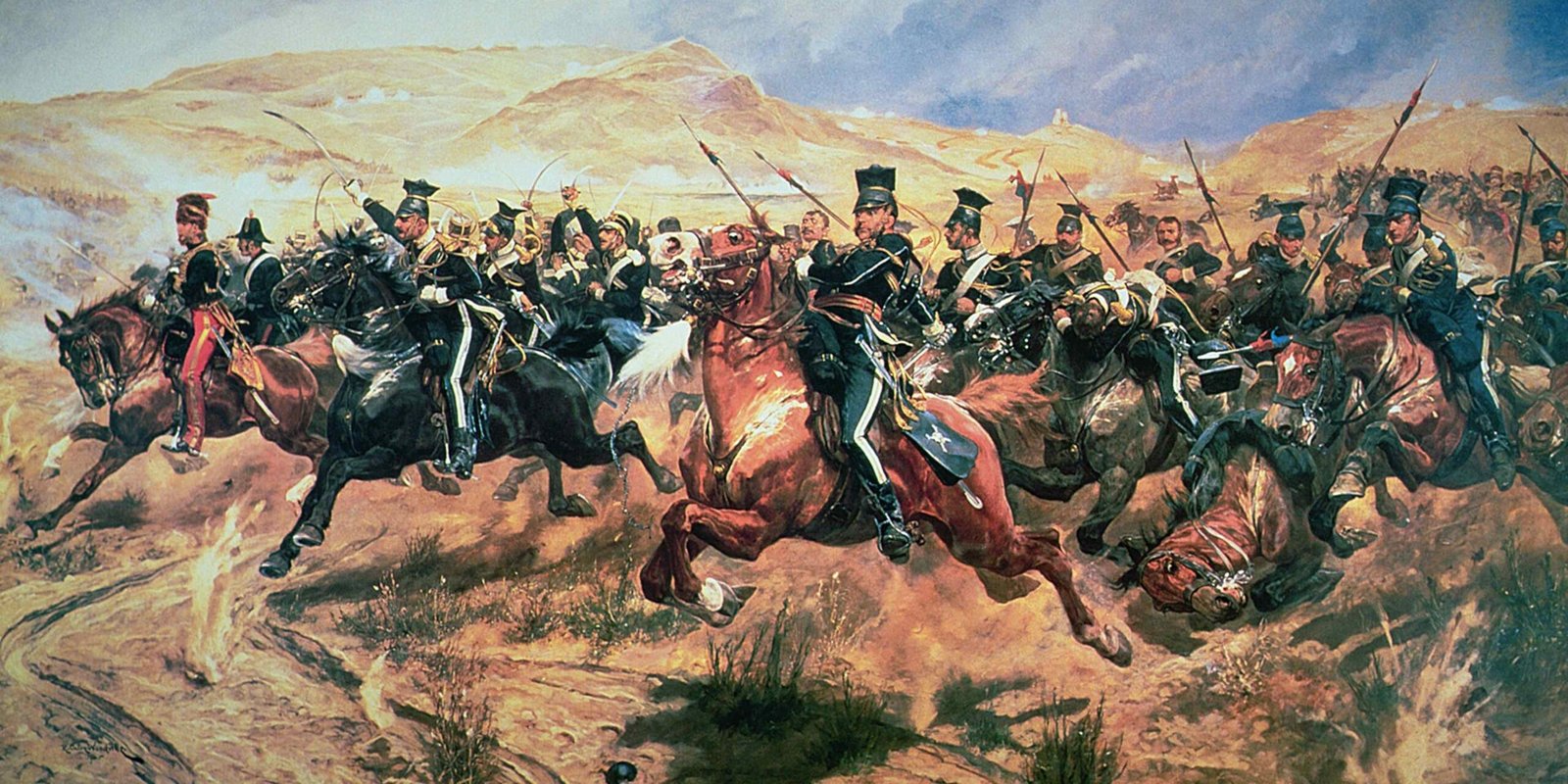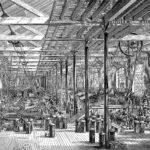The Crimean War was a significant conflict in the 19th century. It involved major European powers and took place between 1853 and 1856.
The Crimean War marked a turning point in military history. This war saw the rise of modern technologies and tactics. Countries like Britain, France, and Russia fought fiercely on the Crimean Peninsula. The war highlighted issues in medical care, leading to advancements in nursing.
The legendary Florence Nightingale emerged as a key figure. Understanding the Crimean War helps us grasp the roots of modern warfare and international relations. This conflict also influenced art and literature, leaving a lasting impact on culture. Join us as we explore the important events and outcomes of the Crimean War.
Roots Of The Conflict
The Crimean War, a significant 19th-century conflict, erupted due to complex causes. Understanding the roots of this war requires examining historical and political factors. These elements set the stage for a major European conflict.
Historical Background
The roots of the Crimean War lie in historical rivalries. The decline of the Ottoman Empire created a power vacuum. European powers sought to expand their influence in the region. Russia aimed to protect Orthodox Christians under Ottoman rule. This protective stance increased tensions with other European nations.
Britain and France had interests in maintaining the balance of power. They opposed Russian expansion in the Mediterranean. The Holy Lands, significant to Christians, Jews, and Muslims, added complexity. Disputes over religious sites exacerbated the situation. This historical backdrop set the stage for conflict.
Political Tensions
Political tensions escalated as nations pursued their interests. Russia’s ambitions threatened the existing power balance. Britain and France feared losing influence in Eastern Europe. Diplomatic negotiations failed to resolve disputes, leading to a standoff.
The Eastern Question focused on how to manage Ottoman decline. European powers disagreed on the best approach. Russia’s aggressive moves in the Balkans alarmed other nations. Alliances and treaties sought to counter Russian threats. These political tensions pushed Europe towards war.
Major Players
During the Crimean War, major players included Britain, France, the Ottoman Empire, and Russia. These nations fought over territorial disputes and power. Their involvement shaped the conflict’s outcome and impacted European politics.
The Crimean War, a mid-19th-century conflict, was a complex web of geopolitical interests. The stage was set with several major players, each with distinct motives and goals. As you dig into this historical event, you’ll find that understanding the ambitions and struggles of these players can provide you with a clearer picture of the war’s impact and legacy.
Russia’s Ambitions
Russia had its eyes set on expanding its influence. The country wanted access to warm-water ports and was eager to assert control over the weakening Ottoman Empire. Russia’s religious motivations also played a role, as it sought to protect Orthodox Christians under Ottoman rule.
You can see how these ambitions were not just about territory but also about increasing Russia’s power on the global stage. Russia aimed to challenge the European balance of power. However, its aggressive push southward alarmed other major powers.
Ottoman Empire’s Struggles
The Ottoman Empire was in decline, often referred to as the “sick man of Europe.” Facing internal strife and external pressures, the Empire struggled to maintain its territories. The Crimean War highlighted these vulnerabilities as the Ottomans sought to defend themselves against Russian advances.
To survive, the Ottomans had to rely on support from Western powers. This reliance showed the Empire’s weakening grip on its once vast territories. Can you imagine the anxiety of a once-mighty empire now relying on external aid for survival?
Western Powers’ Interests
Britain and France had their reasons for intervening. They wanted to check Russian expansion and protect their own geopolitical interests. The balance of power in Europe was crucial, and Russia’s ambitions threatened that stability.
Moreover, the Western powers were concerned about maintaining trade routes and access to strategic territories. Their intervention was not purely altruistic but driven by the desire to protect their own interests. Do you think the Western powers would have acted if their interests were not at stake?
As you reflect on these major players, consider how their ambitions, struggles, and interests shaped the course of the Crimean War. What lessons can you draw from this interplay of power dynamics?
Key Battles
The Crimean War saw pivotal battles, including the Siege of Sevastopol and the Battle of Balaclava. These clashes highlighted military strategies and bravery. The war shaped future military tactics and international relations.
The Crimean War, spanning from 1853 to 1856, was a complex conflict that shaped European history. It saw several key battles that defined its course and left lasting impacts. These battles were not just clashes of military might but also moments that tested strategies, alliances, and human endurance.
Battle Of Alma
The Battle of Alma marked the first major encounter between the allied forces of Britain, France, and the Ottoman Empire against Russia. This clash occurred on September 20, 1854, near the Alma River. It was a significant victory for the allies, showcasing their ability to coordinate under pressure.
Imagine standing among the troops, hearing the roar of cannon fire, and feeling the tension in the air. The allies faced a formidable Russian defense, yet they managed to outmaneuver and overpower them. The victory at Alma boosted morale and set the tone for subsequent engagements.
Interestingly, the terrain played a critical role. Troops had to navigate steep hills and dense brush, which complicated movements. Despite these challenges, the allies’ discipline and strategy prevailed. How do you think modern-day armies would handle such natural obstacles?
Siege Of Sevastopol
The Siege of Sevastopol was a prolonged and grueling confrontation that lasted from October 1854 to September 1855. This siege became the centerpiece of the Crimean War, involving relentless attacks and counterattacks. It tested the endurance and resolve of all forces involved.
During this siege, the allies aimed to capture the Russian stronghold of Sevastopol, a vital naval base. This wasn’t just a military target; it was a symbol of Russian pride and power. The allies’ persistent bombardment and strategic encirclement eventually led to its fall.
Picture the scene: months of living under constant threat, supplies running low, and morale fluctuating. The human spirit was as much a battlefield as the trenches themselves. The fall of Sevastopol marked a turning point, leading to negotiations that would end the war. Can you imagine the relief and devastation felt by those who witnessed its capture?
These key battles of the Crimean War are more than historical events. They offer lessons in strategy, resilience, and the complexities of international alliances. What insights can you draw from these battles for today’s global conflicts?
Technological Advancements
The Crimean War showcased significant technological advancements. Railways and telegraphs improved military communication and logistics. New weaponry, like the rifled musket, changed warfare dynamics.
The Crimean War was a pivotal moment in history, not just for its geopolitical implications but also for the technological advancements that emerged during this period. As a war that straddled the mid-19th century, it became a testing ground for new inventions that changed the face of warfare forever. These innovations were not mere enhancements but fundamental shifts in how wars were fought, leading to profound impacts on military strategy and execution. Have you ever wondered how technology during this time influenced the tactics and outcomes of battles?
Military Innovations
During the Crimean War, several groundbreaking military innovations came to the forefront. The introduction of the rifled musket improved accuracy and range, making traditional tactics obsolete. Soldiers no longer needed to be within close proximity to the enemy to engage effectively. This shift forced armies to rethink formations and strategies, pushing them towards more modern approaches.
The use of railways transformed logistics and troop movements. Armies could now move quickly over vast distances, a change that altered the speed and efficiency of warfare. This logistical leap made it possible to deploy reinforcements and supplies in record time, minimizing resource shortages. How do you think this speed impacted the morale and effectiveness of troops?
Impact On Warfare
These technological advancements had a profound impact on warfare, setting the stage for future conflicts. The Crimean War saw the first use of the telegraph for military communications, allowing commanders to relay messages swiftly. Imagine the advantage of real-time updates and decisions—a crucial difference from the days when messages took days to arrive.
The war also highlighted the importance of battlefield medicine, with innovations such as the use of anesthesia during surgeries. This improved survival rates and recovery times, changing how military hospitals operated. With better medical care, soldiers could return to battle sooner, affecting the overall strength and resilience of forces.
These innovations were not just technical improvements; they redefined strategy, speed, and survival in war. As you reflect on these changes, consider how today’s technological advancements might be shaping the future of warfare. Are we prepared for the next wave of transformation?
Role Of Media
The Crimean War marked a significant period in media history. For the first time, war reporting reached the public in near real-time. Newspapers played a crucial role in shaping perceptions. The media’s influence was profound and lasting. It changed how wars were reported and perceived.
War Correspondents
War correspondents emerged as key players during the Crimean War. These journalists reported directly from the battlefield. They provided firsthand accounts of the events. Their reports were often graphic and detailed. This brought the horrors of war to readers’ homes. William Howard Russell was a notable correspondent. His dispatches for The Times were widely read. They often criticized military leadership and conditions. These reports brought attention to soldiers’ hardships. His work set a new standard for war journalism.
Public Opinion
The media’s role in shaping public opinion was unprecedented. Newspapers influenced how the public viewed the war. Readers were exposed to both victories and failures. This transparency affected public support for the war effort. Graphic descriptions stirred empathy and outrage among the public. People demanded better conditions for soldiers. The media’s power to sway opinion became evident. It showed that informed citizens could demand change. This war highlighted media’s role in democratic societies.

Credit: www.nps.gov
Diplomatic Efforts
The Crimean War was a tumultuous period marked by intense military confrontations. Yet, it was the diplomatic efforts that truly shaped the aftermath of this conflict. Nations scrambled to negotiate peace, aiming to avoid further bloodshed and restore stability. This diplomatic dance involved intricate negotiations and resulted in treaties that attempted to balance power and ensure future peace. As you dive into the diplomatic efforts during the Crimean War, you’ll find a fascinating tale of international relations, strategic alliances, and the quest for lasting peace.
Peace Negotiations
During the Crimean War, peace negotiations were crucial. The conflict had drained resources and morale, forcing leaders to seek diplomatic solutions. These talks weren’t just political—they were personal. Imagine diplomats, each representing their nations’ interests, sitting around a table trying to find common ground. They had to weigh the cost of continued conflict against the benefits of peace.
What would you have done in their shoes? Would you prioritize national pride or the welfare of your people? These negotiations were more than just political maneuvering; they were a test of values and foresight. The decisions made during these talks had long-lasting impacts, shaping future relations between nations.
Treaty Of Paris
The Treaty of Paris was the culmination of these diplomatic efforts. Signed in 1856, it marked the official end of the Crimean War. The treaty laid out terms that aimed to balance power among European nations. It addressed territorial disputes and established guidelines for future interactions.
This treaty was significant because it showed the power of diplomacy over warfare. Nations agreed to terms that required compromise and mutual understanding. Have you ever had to negotiate something important in your life? The Treaty of Paris serves as a reminder that even in times of conflict, diplomacy can forge a path to peace.
These diplomatic efforts during the Crimean War offer valuable lessons. They remind us of the importance of dialogue and compromise in resolving conflicts. As you consider current global tensions, think about how diplomatic efforts can guide us toward peaceful resolutions. What role can you play in advocating for dialogue and understanding in your own community?
Social Impact
The Crimean War, fought from 1853 to 1856, left a profound mark not just on the politics of the day, but also on the social fabric of Europe. The conflict catalyzed numerous changes, particularly in the realm of healthcare and military practices. It influenced societal norms and sparked new movements in public health that continue to resonate with us today. Understanding these impacts can offer valuable lessons for how wars reshape societies, sometimes in ways we least expect.
Florence Nightingale’s Legacy
Florence Nightingale emerged as a beacon of hope during the Crimean War, transforming the field of nursing forever. Her relentless pursuit of better conditions for soldiers revolutionized healthcare practices. She introduced sanitary measures that drastically reduced the mortality rate among wounded soldiers.
Imagine a hospital where cleanliness was a luxury; Nightingale dared to challenge that norm. Her efforts highlighted the importance of hygiene and paved the way for modern nursing. Today, you benefit from her legacy every time you visit a hospital. Her story invites us to reflect on how individual actions can lead to systemic change.
Changes In Military Medicine
The Crimean War was a turning point for military medicine, triggering advancements that were long overdue. The harsh realities of the battlefield demanded new medical practices. This led to improvements in surgical techniques and the establishment of more efficient field hospitals.
Consider how these changes have impacted current military operations. The war spurred the development of better medical evacuation processes, enhancing the survival rates of injured soldiers. It’s fascinating to think about how conflict can drive innovation, raising questions about what other areas might benefit from similar scrutiny.
These advancements were not just limited to the military. The improvements in medical care influenced civilian healthcare practices as well. By understanding the ripple effects of the Crimean War on social structures, you can appreciate the interconnectedness of military and civilian life.
Reflecting on these impacts makes you ponder: how might your actions today influence the world tomorrow? The Crimean War reminds us that even in the darkest times, there is room for progress and positive change.

Credit: www.history.com
Long-term Consequences
The Crimean War left a lasting impact on global history. Its consequences rippled through the 19th and 20th centuries. The war reshaped alliances, military strategies, and geopolitical landscapes. Understanding these long-term effects offers insight into modern international relations.
Shift In Global Power
The Crimean War marked the decline of the Ottoman Empire. It highlighted the empire’s vulnerability to European powers. Russia’s ambitions were checked, altering its influence in Europe. France and Britain emerged stronger, showcasing their naval power. This conflict shifted the balance of power in Europe.
New alliances formed. Traditional enemies became unlikely partners. This war set the stage for future coalitions. The power dynamics influenced diplomatic policies across Europe. It led to a period of intense military innovation. Nations sought to avoid repeating past mistakes.
Influence On Future Conflicts
The Crimean War taught important military lessons. Trench warfare became a common strategy. It foreshadowed tactics used in World War I. Communication lines and logistics gained emphasis. Armies recognized the value of supply chains. Medical care for soldiers improved significantly.
The war also affected public opinion. Media played a significant role. War correspondents brought the frontlines to living rooms. This influenced public perception of military campaigns. The Crimean War’s legacy influenced future conflicts globally. Lessons learned shaped strategies in later wars.

Credit: www.britannica.com
FAQs
What Is The Main Cause Of The Crimean War?
The main cause of the Crimean War was the power struggle over the declining Ottoman Empire. Russia sought control over Ottoman territories, threatening British and French interests. Religious tensions between Catholics and Orthodox Christians in the Holy Land also fueled conflict, leading to war from 1853 to 1856.
Who Won The Crimean War?
The Allies won the Crimean War. The coalition included the Ottoman Empire, France, Britain, and Sardinia. Russia was defeated.
Was The US Involved In The Crimean War?
The US was not involved in the Crimean War. The war took place from 1853 to 1856 in the Crimean Peninsula.
Why Did Russia Lose The Crimean War?
Russia lost the Crimean War due to outdated military tactics and inferior technology. Allies like Britain and France had stronger naval forces. Poor logistics and supply issues weakened Russian efforts. Diplomacy failures led to isolation, limiting support. These factors combined to ensure Russia’s defeat in the conflict.
Conclusion
The Crimean War left a lasting impact on world history. It reshaped military tactics and alliances. Nations learned valuable lessons from the conflict. The war highlighted the importance of modern warfare. Understanding its history helps us grasp current global relations.
The Crimean War remains a significant chapter in history. Its effects are still felt today. Studying it provides key insights into military and political developments. The war’s legacy continues to influence international dynamics. Knowing about the Crimean War enriches our knowledge of global events.








